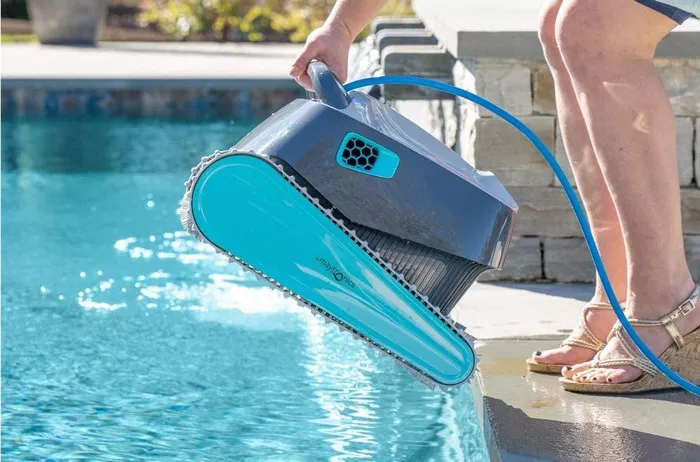Dolphin robot vacuums have revolutionized the way we maintain cleanliness in our homes and workplaces. These intelligent devices not only save time and effort but also ensure thorough cleaning, even in hard-to-reach areas. In this guide, we’ll delve into the world of Dolphin robot vacuums, exploring their features, benefits, and how to make the most out of these innovative cleaning companions.
Understanding Dolphin Robot Vacuums
Dolphin robot vacuums, also known as Dolphin pool cleaners, are autonomous cleaning devices designed to efficiently and effectively clean various surfaces, including floors, carpets, and even swimming pools. Unlike traditional vacuum cleaners, Dolphin robots operate autonomously, navigating through spaces using advanced sensors and algorithms. They are equipped with brushes, suction mechanisms, and filters to remove dust, dirt, and debris from surfaces, leaving them spotless.
Features and Benefits
Efficient Cleaning: Dolphin robot vacuums are programmed to navigate through rooms methodically, ensuring comprehensive coverage and efficient cleaning. Their advanced algorithms enable them to adapt to different floor types and obstacles, making them versatile cleaning solutions for various environments.
1. Time-Saving: With Dolphin robot vacuums, cleaning becomes a hands-free task. Simply set up the device, schedule cleaning sessions, and let it do the work while you attend to other tasks or enjoy leisure time. This time-saving feature is especially beneficial for busy individuals and families.
2. Deep Cleaning: Equipped with powerful suction and scrubbing capabilities, Dolphin robot vacuums can remove stubborn dirt and grime from surfaces effectively. Whether it’s pet hair embedded in carpets or debris accumulated on hard floors, these devices ensure a thorough cleaning experience.
3. Customizable Settings: Many Dolphin robot vacuums come with customizable cleaning modes and schedules, allowing users to tailor their cleaning preferences according to their specific needs. Whether you prefer a quick clean-up session or a more thorough deep-cleaning operation, these devices can be adjusted accordingly.
4. Smart Navigation: Dolphin robot vacuums utilize intelligent navigation systems to map out the cleaning area and avoid obstacles. They can navigate around furniture, walls, and other objects with ease, minimizing the risk of collisions and ensuring efficient cleaning paths.
5. Low Maintenance: Despite their advanced features, Dolphin robot vacuums require minimal maintenance. Regular emptying of the dustbin and cleaning of filters and brushes are usually the only maintenance tasks needed, making them convenient and hassle-free to use.
Making the Most of Your Dolphin Robot Vacuum
To maximize the efficiency and convenience of your Dolphin robot vacuum, consider the following tips:
1. Optimize Cleaning Schedule: Take advantage of the scheduling feature to ensure regular cleaning sessions, especially in high-traffic areas or spaces prone to dust accumulation. Setting up a cleaning schedule will help maintain cleanliness effortlessly.
2. Clear the Area: Before initiating a cleaning session, remove any obstacles or clutter that could obstruct the robot vacuum’s path. This includes small objects, loose cables, and low-hanging curtains or drapes. Clearing the area will enable the device to navigate freely and clean effectively.
3. Utilize Boundary Markers: If there are specific areas you want to restrict the robot vacuum from accessing, such as delicate furniture or sensitive electronic equipment, use boundary markers or virtual walls to create designated cleaning zones. This ensures that the device cleans only where it’s needed.
4. Regular Maintenance: Perform routine maintenance tasks as recommended by the manufacturer to keep your Dolphin robot vacuum in optimal condition. This includes emptying the dustbin, cleaning filters and brushes, and inspecting the device for any signs of wear or damage.
5. Monitor Performance: Keep an eye on the performance of your Dolphin robot vacuum and make adjustments as necessary. If you notice any issues such as decreased suction power or erratic navigation, troubleshoot the problem or seek assistance from customer support.
6. Stay Updated: Stay informed about software updates and firmware upgrades released by the manufacturer. These updates often include performance enhancements, bug fixes, and new features that can further improve the functionality of your Dolphin robot vacuum.
By following these tips and incorporating Dolphin robot vacuums into your cleaning routine, you can enjoy a cleaner, healthier environment with minimal effort.
Conclusion
Dolphin robot vacuums represent a leap forward in cleaning technology, offering unmatched convenience, efficiency, and performance. With their advanced features and intelligent design, these devices have become indispensable tools for maintaining cleanliness in homes and commercial spaces alike. By understanding their features, benefits, and optimal usage, you can make the most out of your Dolphin robot vacuum and enjoy a cleaner, more comfortable living environment.
FAQs
Q1: Can Dolphin robot vacuums clean multiple floor types effectively?
A1: Yes, Dolphin robot vacuums are designed to clean various floor types, including hardwood, tile, carpet, and laminate, with equal efficiency. Their adaptive cleaning algorithms and adjustable settings ensure thorough cleaning across different surfaces.
Q2: Are Dolphin robot vacuums suitable for pet owners?
A2: Absolutely! Dolphin robot vacuums are equipped with powerful suction and brush mechanisms that can effectively remove pet hair and dander from floors and carpets. Their deep-cleaning capabilities make them ideal companions for pet owners looking to maintain a clean and hygienic living environment.
Q3: How do Dolphin robot vacuums handle stairs and elevated surfaces?
A3: Dolphin robot vacuums are designed for floor-level cleaning and are not equipped to navigate stairs or elevated surfaces. It’s essential to ensure that such areas are inaccessible to the device to prevent accidents. Additionally, using boundary markers or virtual walls can help create barriers to prevent the robot vacuum from accessing these areas.

